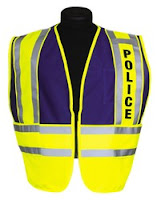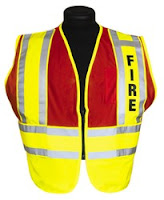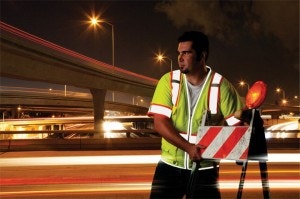
Use of the term Public safety organization reasonably implies that the organization is composed of law enforcement or public safety personnel. Terms used to describe these occupations usually include officer, peace officer, police officer, police, law enforcement, reserve officer, deputy, deputy sheriff, constable, deputy constable, fireman, firefighter, volunteer fireman and/or emergency medical service provider, paramedics and search and rescue workers.
US federal law states that all personnel working on a highway that is eligible for federal funds to wear a hi-vis vest starting on November 25, 2008. Firefighters are excluded while engaged in firefighting activities or hazardous materials (hazmat) situations. Otherwise, hi-visibility clothing must be worn. Also, paramedics and police officers not engaged in law enforcement activities are required by law to wear high visibility clothing.

In 2006, ANSI released the 207-2006, or American National Standard for High-Visibility Public Safety Vests, in response to issues raised by public safety officials with respect to the ANSI 107 vest design. Their concerns were both tactical and influenced by a need to differentiate between law enforcement/emergency personnel and the vests worn by construction workers. The changes have different requirements for fluorescent background material, specifically allowing for a shorter design that allows equipment belt access. It also includes many optional features, such as a 5-point breakaway design for easy removal, panels readily identifying the wearer as an emergency responder, and radio and badge pockets/holders.

These vests features an upper mesh, color coded fabric for proper public service department identification along with a hi-vis solid fabric bottom. Each vest includes: left chest mic tab, pencil pocket and inside large lower patch pocket. Breakaway shoulders and sides with tear away zipper front closure. The vest folds into the large inside pocket to become a self enclosed pouch for storage. The vests also offers 4-season adjustability to accomodate bulky coats. Available in sizes M/XL and 2XL/4XL.
HiVis Supply is a reseller of high visibility apparel including: ANSI approved clothing, safety vests, traffic vests, hivis vests, ANSI Class 2, ANSI Class 3, ANSI 107-2004, ANSI 207, ANSI Class E, public safety vests, incident command vests, specialty vests, survey vests, safety pants, high visibility t-shirts, high visibility jackets, sweatshirts, coats, windbreakers and rainwear.







